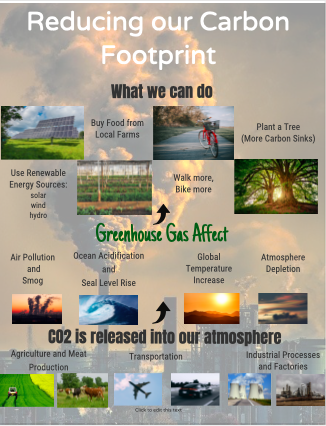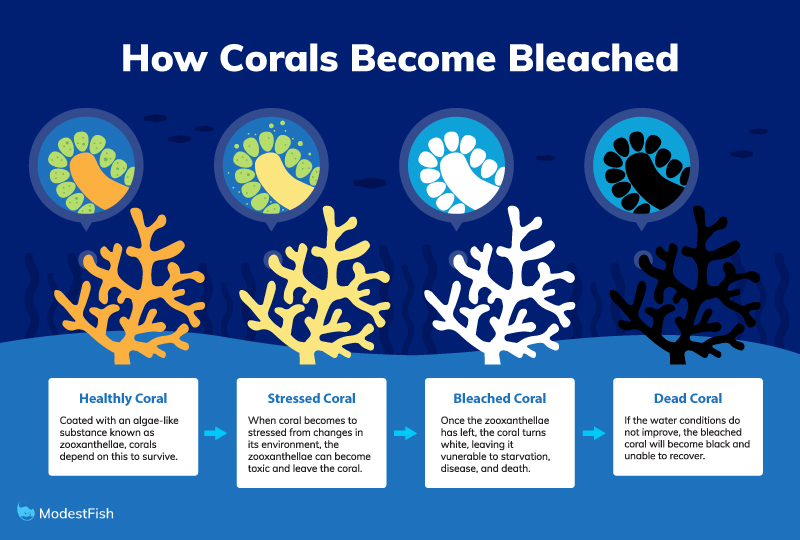How Is Climate Change Impacting Our Oceans?

Since 1896, when a Swedish scientist, Svante Arrhenius, described the detrimental effects of carbon dioxide on our climate, we have known the effects of our actions. Since humans took over planet Earth, our global temperatures have been rising because of our CO2 emissions. Within the past 100 years, the temperature has increased at a much higher rate due to human production. The physical science behind climate change was discovered by John Tyndall in 1859 by describing how carbon dioxide and other gases get trapped in the atmosphere and when the sun’s energy reaches the atmosphere, the gases are trapped and therefore increase the planet’s temperature. This is known as the Greenhouse Effect and the main gases that are included as a greenhouse gas are Carbon Dioxide, Methane, and Nitrous Oxide. In order to measure our global Carbon Dioxide emissions, in 1958, Dr. Charles David Keeling began taking air samples and measuring the amount of CO2 in our atmosphere. Since then, the Mauna Loa Observatory in Hawaii continues to measure the CO2 amounts in our atmosphere and reports it yearly on the Keeling Curve. It is important to know our yearly emissions in order to follow the Paris Agreement. In 2016, countries came together to discuss our climate crisis and established a goal of keeping our global temperature increase under 2 degrees Celsius, striving to keep it under a 1.5 degrees Celsius increase. This agreement also acknowledges how we must adapt to climate change, adapt to the impacts, and to provide financial assistance to countries affected by climate change. As our global temperatures are rising, our oceans are feeling a large impact and could be in danger for the future. Since 1880, our sea level has risen 8 inches and continues to rise. Scientists predict by 2100 our sea will have risen 1-4 feet.

As our planets temperature increases, our glaciers and sea ice are melting. Since 1994, we have lost over 400 billion tons of glaciers. And since 1979, we have a 12.86% loss of sea ice per decade. This leads to sea levels rising, loss of heat reflecting surfaces, and lost species range and niches. Because of this, penguin populations have been down 90% in some areas. So although we don’t directly see our ocean levels rising and our glaciers melting, sea levels are increasing everyday.
Acidification is also a large threat to our oceans as result of carbon dioxide entering the ocean. When carbon dioxide enters the ocean, chemical reactions occur and result in carbonic acid which reduces the pH of the water and lessens carbonate ions. This changes the natural balance of the water and therefore, there are less marine calcifiers, which are species like corals and mollusks. Scientists are also seeing a large increase of bleached corals as the oceans pH decreases and the temperature increases. Coral have a micro algae, zooxanthellae, that live in corals polyps and gives the coral its color. With the increase of water temperatures, coral becomes under stress and rejects the algae resulting in a white coral. And because the conditions of our oceans aren’t improving, the algae won’t return to the coral and therefore the entire reef dies.

The ocean covers approximately 70% of our Earth’s surface and as the ocean continues to experience degradation, ecosystems and even humans will feel the impact. Marine species are being forced to migrate to different places because of habitat loss and the warming of the oceans. To “beat the heat”, fisherman and scientists have noticed that fish are beginning to move towards colder water near the two poles of our planet. This can threaten the economy and food security of costal communities. Lots of coastal towns rely on tourism to help their economy and with the increasing impacts of climate change, fisherman and local people are already seeing differences. Also, because of the temperature increases, scientists predict that storms, including hurricanes, heat waves, droughts, and blizzards, could get worse and stronger. This is known as the El Niño effect, which is the result of a weaker polar jet stream. Warm air moves upward and cold air moves downward resulting in an increase of precipitation. With our oceans becoming warmer, they are able to transfer more heat into the air which intensifies storms like hurricanes. We already see the destruction that hurricanes bring us, but with these storms getting stronger; coastal towns are in danger. With increasing sea levels and stronger weather events, within a few years some coastal areas could go under water leaving people without homes and ruining lives. Marine species and humans are vulnerable to the large impacts of climate change and we are already seeing the changes, but nothing seems to be changing in order to reduce these impacts.
When we think about climate change on a large scale, it almost seems impossible to find a solution. Many people believe there’s no way to stop climate change or don’t accept what is occurring. With all the people on the planet, all of the vehicles and planes that produce carbon dioxide, and our high animal based diet that contribute to other greenhouse gases, it almost does seem impossible. But when you think about the climate crisis on a smaller scale, there are things that everyone can do to decrease our carbon emissions. Easy things to do to reduce one’s personal carbon footprint are switching to renewable energy instead of relying on oil and gas, decreasing driving and instead biking, buying produce and meat from local farms instead of supporting large meat processors, and easy enough, just planting more trees! Trees are carbon sinks, meaning they absorb carbon dioxide in the atmosphere through photosynthesis. It is important that we stop cutting down rainforest, jungles, and forests because they are responsible for consuming most of the CO2 in our air. There are easy switches that all people can make in their everyday lives to reduce even a little bit of our impact on our planet. There isn’t another planet that can inhabit humans currently so once this planet degrades, we have no where else. And because our oceans take up such a large part of our planet, it is imperative that we focus on saving it and everything that lives within it.
Caroline Behnke – Intern at Cape May Whale Watch and Research Center
University of Tennessee
References:
Darby, M. (2016, September 3). Meet the woman who first identified the greenhouse effect. Climate Home News. https://www.climatechangenews.com/2016/09/02/the-woman-who-identified-the-greenhouse-effect-years-before-tyndall/.
Marshall, M. (2006, September 4). Timeline: Climate Change. New Scientist. https://www.newscientist.com/article/dn9912-timeline-climate-change/.
Ocko, I. (2020). How climate change makes hurricanes more destructive. Environmental Defense Fund. https://www.edf.org/climate/how-climate-change-makes-hurricanes-more-destructive.
https://modestfish.com/wp-content/uploads/2018/10/Coral-Bleaching-Graphic.jpg’ alt=’how corals become bleached and die’ width=’800′ height=’540′ border=’0′ /></a></p>
